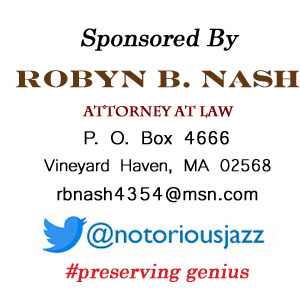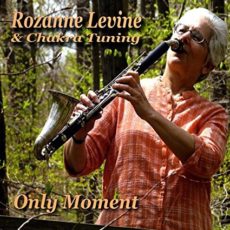
Daily Dose Of Jazz…
Rozanne Levine was born October 19, 1945 in New York City and grew up in the Bronx. She studied clarinet and guitar as a youth, performing with the school orchestra as a clarinetist. She went on to matriculate through the New York University College of Arts and Sciences with a degree in Psychology. During the same period she took clarinet lessons with Perry Robinson.
By the end of the 1970s she was clarinetist in William Parker’s and Patricia Nicholson Parker ‘s Centering Music / Dance Ensemble. Since the early 1980s, she has also worked with saxophonist Mark Whitecage in his Glass House Ensemble. In 1993 she again joined William Parker and became a member of the Improvisors Collective. At the same time, she founded her group, Christal Clarinets, with Perry Robinson, Anthony Braxton and Joe Fonda.
Levine also worked with Jemeel Moondoc, Theo Jörgensmann, Steve Swell, Gerry Hemingway, Billy Bang, Polly Bradfield, Tristan Honsinger, Dennis Charles, Charles Brackeen, Jemeel Moondoc among others. In the duo RoMarkable with Mark Whitcage, she improvises to his sound sculptures. She composes chakra tuning for her ensemble and uses her own photographs as a starting point for collective imprints. In 1989, she received the commission Grant From The Painted Bride Art Center for her musical and photographic work.
Improvisational clarinetist, composer and photographer Rozanne Levine passed away on June 18, 2013.
More Posts: clarinet

Daily Dose Of Jazz…
William Overton Smith was born on September 22, 1926 in Sacramento, California and grew up in Oakland, California, where he began playing clarinet at the age of ten. He put together a jazz group to play for dances at 13, and at the age of 15 he joined the Oakland Symphony. Idolizing Benny Goodman, after high school he completed a brief cross-country tour with a dance band that ended his romance for the life of a traveling jazz musician. He gave two weeks’ notice when the band reached Washington, D.C. and encouraged by an older band member to get the best education he could, he headed to New York.
Beginning his formal music studies at the Juilliard School of Music, he played New York jazz clubs like Kelly’s Stables at night. However, uninspired by the Juilliard faculty, he returned to California and at Mills College he met pianist Dave Brubeck, and became a member of the Dave Brubeck Octet, and later occasionally subbed for saxophonist Paul Desmond in the Dave Brubeck Quartet.
Winning the Prix de Paris presented Smith the opportunity for two years of study at the Paris Conservatory, and in 1957, he was awarded the prestigious Prix de Rome and spent six years in that city. He has since received numerous other awards, including two Guggenheim grants.
As an educator at the University of Southern California, he began a thirty-year career at the University of Washington School of Music in Seattle, where he taught music composition and performance. He co-led the forward-thinking Contemporary Group, first with Robert Suderburg and then with trombonist Stuart Dempster, from 1966 to 1997 and at 91 clarinetist Bill Smith is currently professor emeritus.
More Posts: clarinet
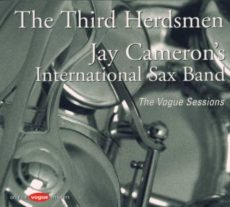
Daily Dose Of Jazz…
Jay Cameron was born on September 14, 1928 in New York City and began as an alto saxophonist only to later record with bass and B-flat clarinet and baritone saxophone.
He began his career in the early 1940s in Hollywood with Ike Carpenter‘s band, with whom he played until 1947. He moved to Europe near the end of the decade and played with Rex Stewart, Bill Coleman, Roy Haynes and Henri Renaud in France and Italy. In the early 1950s Cameron gigged around Belgium, Germany, and Scandinavia and by 1955 he played steadily in Paris, France with a band that included Bobby Jaspar, Barney Wilen and Jean-Louis Chautemps.
Returning to the United States in 1956, Jay played in bands led by Woody Herman and Slide Hampton as well as collaborations with Chet Baker, Dizzy Gillespie, Maynard Ferguson, Freddie Hubbard, Candido Camero, Bill Barron, André Hodeir, Hal McKusick, and Les and Larry Elgart.
He was the leader of the International Sax Band and the Third Herdsmen. And in the late 1960s he toured with Paul Winter. He continued to be an active musician and advocate for jazz programming and education throughout his life. Baritone saxophonist and reed player Jay Cameron passed away on March 20, 2001 in San Diego, California.
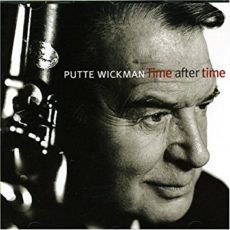
Daily Dose Of Jazz…
Putte Wickman was born Hans Olof Wickman on September 10, 1924 in Falun, Sweden and grew up in Borlänge, Sweden, where his parents hoped he would become a lawyer. He nagged them to allow him to go to high school in Stockholm. Arriving in the capital at 15 not knowing what jazz was, and not having access to a piano his mother gave him a clarinet and by then he had started to hang out with those with jazz records.
With Artie Shaw and Benny Goodman as his role models by 1944, he had already turned to music full-time. He was taken on as band leader at Stockholm’s Nalen and in 1945 the newly founded Swedish newspaper Expressen described him as the country’s foremost clarinet player.
For eleven years Putte led his own band at Nalen and during the 1960s he ran the big band at Gröna Lund, and at Puttes, the club he part-owned, at Hornstull in Stockholm. He gave church performances and concerts yearly and stayed active until shortly before his death. In 1994, Wickman received the Illis Quorum gold medal, the highest award that can be conferred upon an individual Swedish citizen by the Government of Sweden.
Clarinetist Putte Wickman, who considered himself self-taught having never taken a classes on the instrument and a member of the Royal Swedish Musical Academy, passed away on 14 February 2006 in Grycksbo, Sweden.
More Posts: clarinet
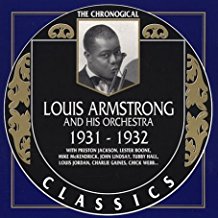
Daily Dose Of Jazz…
Lester Boone was born August 12, 1904 in Tuskegee, Alabama and studied at the Illinois College of Music before beginning his career in the Chicago bands of Alex Calamese, Charlie Elgar, Clarence Black and Carroll Dickerson. At the end of the 1920s he played in Albert Wynn’s Creole jazz band and on his recording Down by the Levee for Vocalion Records.
The following years he worked with Harry Dial, got his first big break playing with Earl Hines, and by the early Thirties was hitting with Louis Armstrong. He then moved on to play with Jerome Carrington, Emperor Marshall, Eubie Blake, the Mills Blue Rhythm Band and Jelly Roll Morton. Bouncing between Chicago and New York City he played with trumpeter Hot Lips Page and Eddie South. By 1941 he was accompanying Billie Holiday on her recording session of Am I Blue? on the Decca label.
With Tom Lord he was involved in 24 recording sessions between 1928 and 1941. From the early 1940s into the Sixties he played in New York with his own bands including with Everett Barksdale at clubs such as Harvey’s and the Lucky Bar.
Alto and baritone saxophonist and clarinetist Lester Boone, who had the honor of having the great Satchmo personally introduce his solo in that unmistakable growly voice of his, passed away in 1989.


